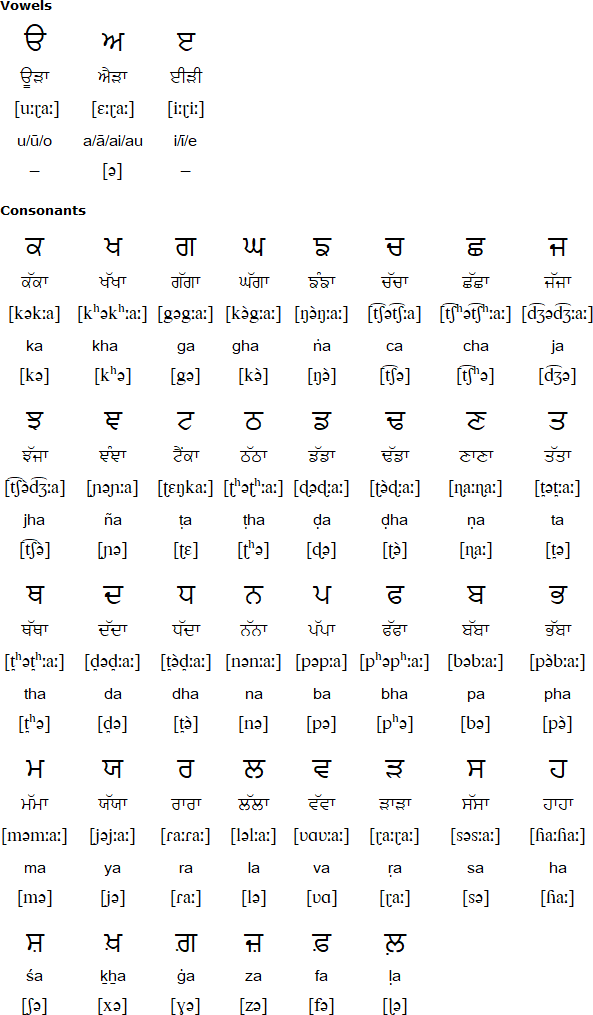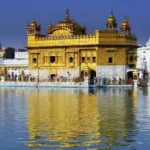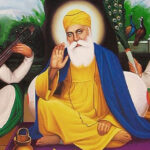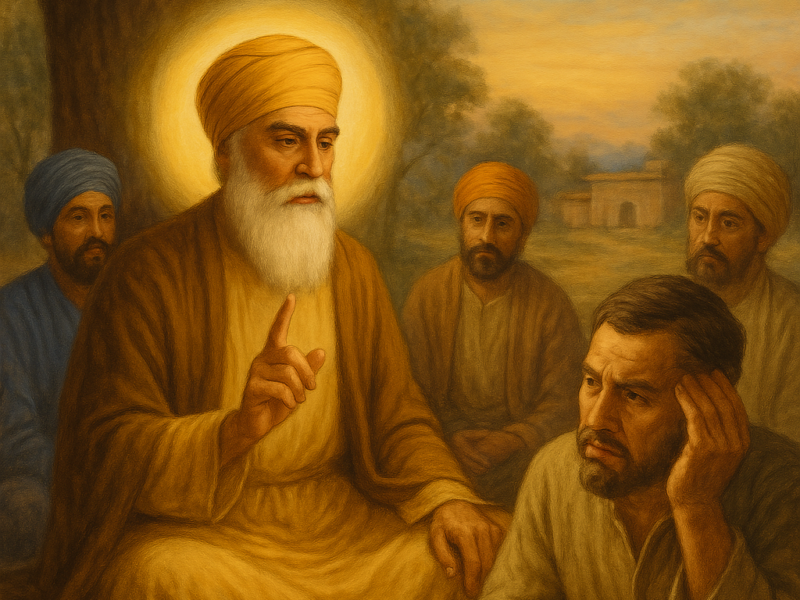Punjabi vs Gurumukhi
Most people think that Punjabi is a language and that Gurumukhi is another language in which Guru Granth Sahib is written. However, this is not the case.
Suppose someone wants to convey a message to the masses, that person will write in the most common language that will be easier to understand. He will not use language that is new and that requires learning before the message is conceived. The same fact is observed here. Gurumukhi is indeed used to write Guru Granth Sahib but the language in which it is written is Punjabi. The confusion may be cleared by the information that Punjabi is a language and Gurmukhi is a script used to write down the sayings of the gurus.
Punjabi is a language and Gurumukhi is a script that is used to write the Punjabi language. Punjabi is a language belonging to the group of Indo-Aryan languages. This is a language spoken prominently in the state of Punjab in Pakistan and India. It is very similar to Urdu and Hindi.
There are two main scripts used to write Punjabi. Punjabi-speaking Muslims write the language in the right-to-left Perso-Arabic script. This script is also known as Shahmukhi.
Punjabi is also written in Hindi and Urdu script. Sikhs who speak Punjabi write it mainly in the Gurumukhi script adopted by Angad Dev Ji. Angad Dev Ji is one of the ten Gurus of the Sikhs. It was not invented by Guru Ji from scratch, but by modifying the then-existing Lando script and polishing it into what is known today as Gurumukhi.
Punjabi also evolved with time like any other language. There are many differences between the 16th-century Punjabi version and today’s version. Punjabi also has different dialects like Majhi, Malwi, Potohari, Doabi, Jhangvi, and Multani.
Punjabi is spoken by 44 percent of the population of Pakistan and 3 percent of the entire population of India. It is also spoken as a minority language in many other countries. Many Punjabi expatriates living in countries like the UK, USA, Canada, etc still use the Punjabi language. This is the reason why Punjabi has grown at a great pace and has got fourth place in the list of most spoken languages in the world.
Gurumukhi is the most widely used script for writing Punjabi in India. It is an abugida derived from the Brahmi script standardized by the second Guru of the Sikhs. Modern Gurmukhi has a total of 35 letters and 9 vowels. Two symbols are for nasal sounds and one symbol duplicates the sound of any consonant.
A Punjabi language, Punjabi similarly spelled Punjabi, is perhaps most commonly spoken in Indo-Aryan dialects. The old British spelling “Punjabi” remains in more normal general use than the scholastically accurate “Panjabi”. Punjabi is an Indian language that has its place within the outer circle of Indo-Aryan dialects and the distantly related English as an individual of a similar Indo-European language family.
It is an advanced Indo-Aryan language spoken essentially in the conditions of Punjab in India and Pakistan. It is almost similar to Hindi and Urdu. The Punjabi language is spoken by about 70 million speakers, generally in the Punjab region of Pakistan.
There are also significant foreign networks of Punjabi speakers, especially in Canada and the United Kingdom—where in the mid-21st century they separately established the third and fourth largest phonetic assemblies in the public population—just as in a few parts of the United States.
In contempt of the extremely enormous number of Punjabi speakers and the rich customs of mainstream verse, the normalization of the language has been demonstrably limited by the absence of real recognition, as well as by the distinct social inclinations of the three major close-knit strict networks of Muslims, Hindus, and Hindus. the Sikhs.
What is Gurumukhi?
In India, Punjabi is written in the unmistakable Gurmukhi script, which is particularly associated with the Sikhs. This content is an individual of the Indian content group, composed from left to right, but in its conjunction, it essentially contrasts with the Devanagari used to compose Hindi. The Urdu script, written from right to left, is used to write Punjabi in Pakistan, where it is normal today due to the imitative name Shahmukhi.
In addition, Punjabi is composed of Urdu and Hindi content. Contrary to another prevailing view, Guru Ji did not create Gurmukhi without any preparation; changed Lando’s script. He cleaned up the content of the land to reflect, the articulation and the plausible apparent articulations of what is now known in particular as Gurmukhi.
Landa was here quite long before Guru Ji. When one examines the piece of Guru Granth Sahib known as Patti, one finds that this Gurbani composed by the main Guru Ji specifies the Gurmukhi letters with similar names as we probably know them today. On the off chance that Guru Angad Dev Ji made the Gurmukhi letters okay, how could Guru Nanak Dev Ji refer to it in his mind a few years earlier. This content is known as Gurmukhi or in a real sense, the content used by Gurmukhi has existed for some time before.
Main differences between Punjabi and Gurumukhi
Punjabi is a language while Gurumukhi is not a language, it is the content of which Punjabi is composed, in fact as Devnagri is the content of Hindi.
- Punjabi is adopted from the Gurumukhi script, while Gurumukhi is an abugida derived from the Brahmi script standardized continuously by the Sikh Gurus.
- Punjabi is composed in addition to Hindi and Urdu script, but Sikhs who communicate in Punjabi mostly compose it in the Gurumukhi script.
- Punjabi is spoken by 44% of the population of Pakistan and 3% of the total population in India, while Gurmukhi is the most widely used Punjabi composition content in India.
- Punjabi is a language in the Gurumukh script, although everything the master speaks is Gurmukh, regardless of whether it is Punjabi, Persian, Pashto, and so on.








